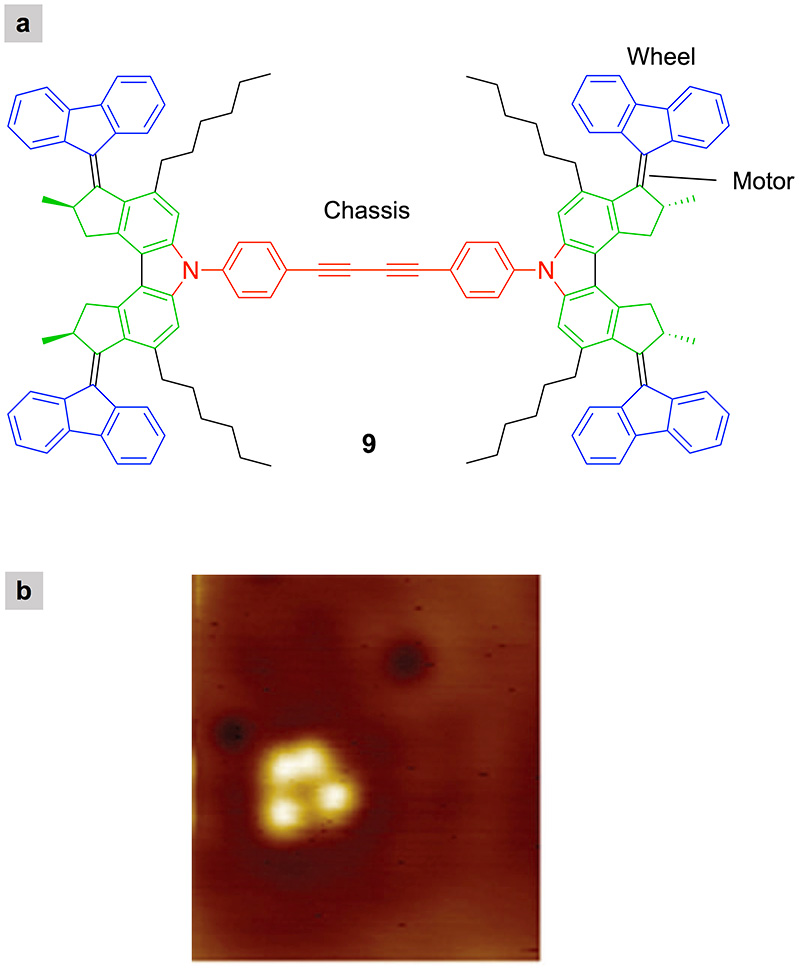4.5. A four-wheel drive nanovehicle
So far we have described artificial molecular machines whose functioning has been observed by measuring collective properties, i.e. determined by a very large number (many billions of billions) of molecules, typically contained in a solution. We have also seen, however, that nowadays, with appropriate techniques, single molecules can be imaged (Figs. 3 and 4). The question that arises is therefore: can we operate and observe the movement of one single molecular machine?
In this regard, a team of chemists (Ben Feringa and collaborators at the University of Groningen) and physicists (Karl-Heinz Ernst and collaborators at the Swiss Federal Laboratory for Materials Science and Technology) did a spectacular scientific enterprise. Chemists built a real nanovehicle (compound 9, Fig. 30a), consisting of four rotary motors of the type shown in Fig. 26 mounted on a rigid frame (Kudernac 2011). Physicists then deposited single molecules of 9 on-to a copper surface under conditions of high vacuum and at very low temperature (–266 °C), and observed them with a scanning tunneling microscope (STM).

Under the STM microscope, the nanovehicle appears as a four-lobed object; each of them represents a molecular motor (Fig. 30b). Using the microscope probe, the researchers applied an electric potential to the nanovehicle, such as to operate the rotary motors (which instead in solution are set in motion by the light; see Fig. 26); subsequently, they again recorded the image of the molecule. Some of the observed nanovehicles moved directionally on the surface, covering a distance of 6 nanometers after ten excitation pulses. This behavior can only be explained by admitting that the propulsion is due to the interaction between the metal surface and the wheels of the nanowire set in rotation by the electrical stimulus. Since each wheel is connected to an independent motor, we are faced with a four-wheel drive nanovehicle.
This study undoubtedly represents a milestone in the field of artificial molecular machines, not only for its scientific content, but also for its high symbolic value and the impact on people’s imagination. It is no coincidence that the nanovehicle was highlighted in the poster of the 2016 Nobel Prize in Chemistry (Fig. 17).



